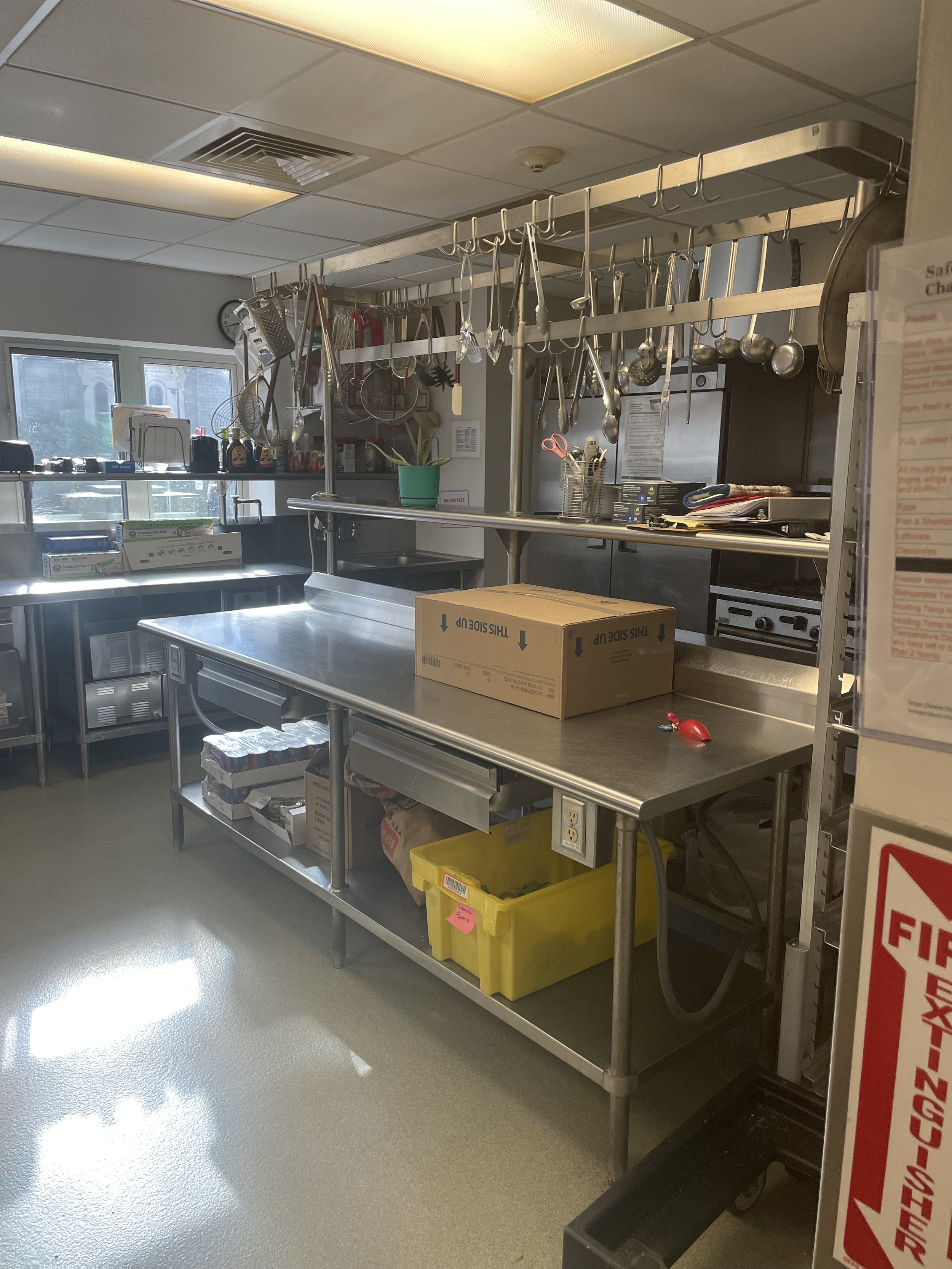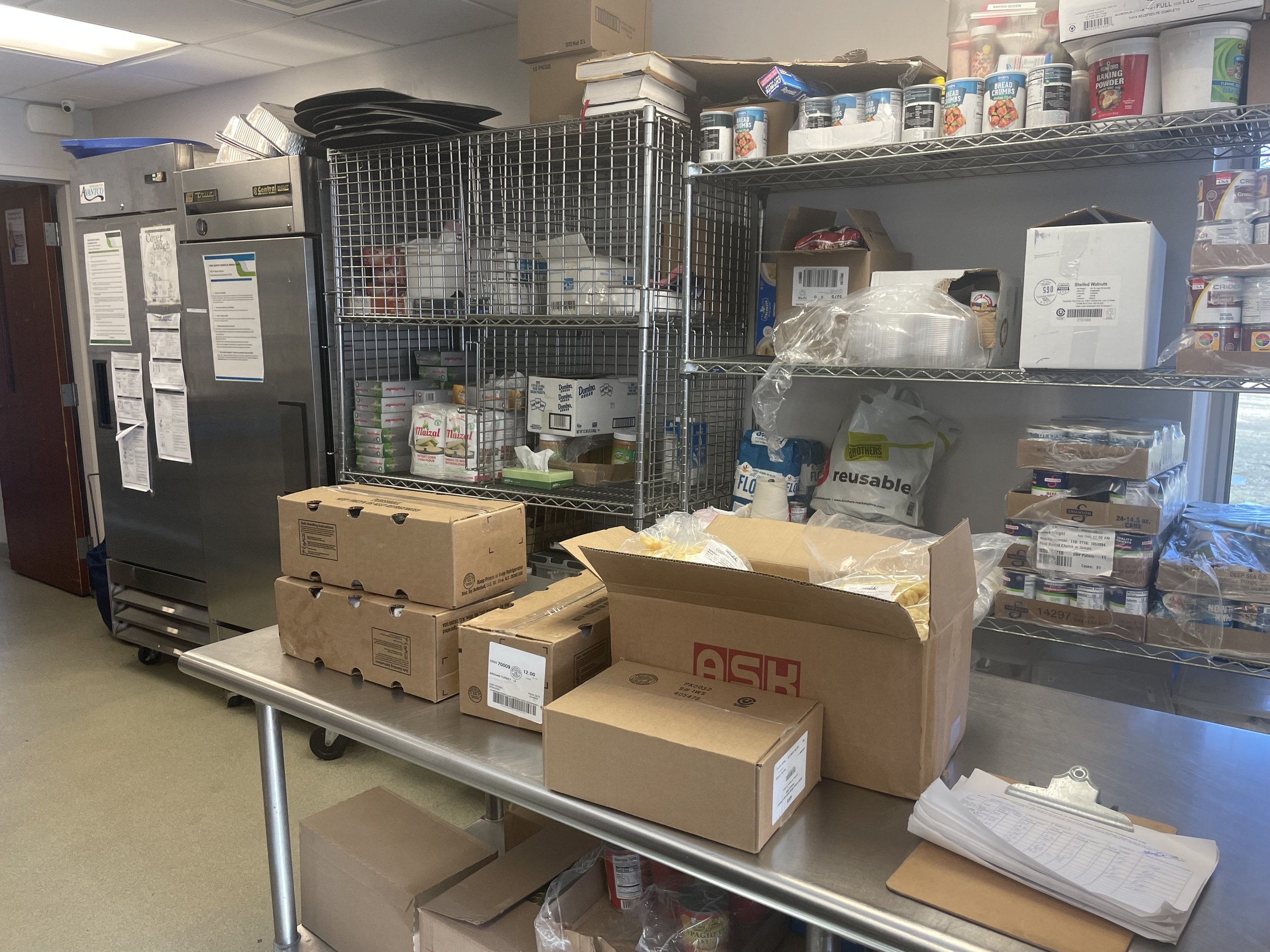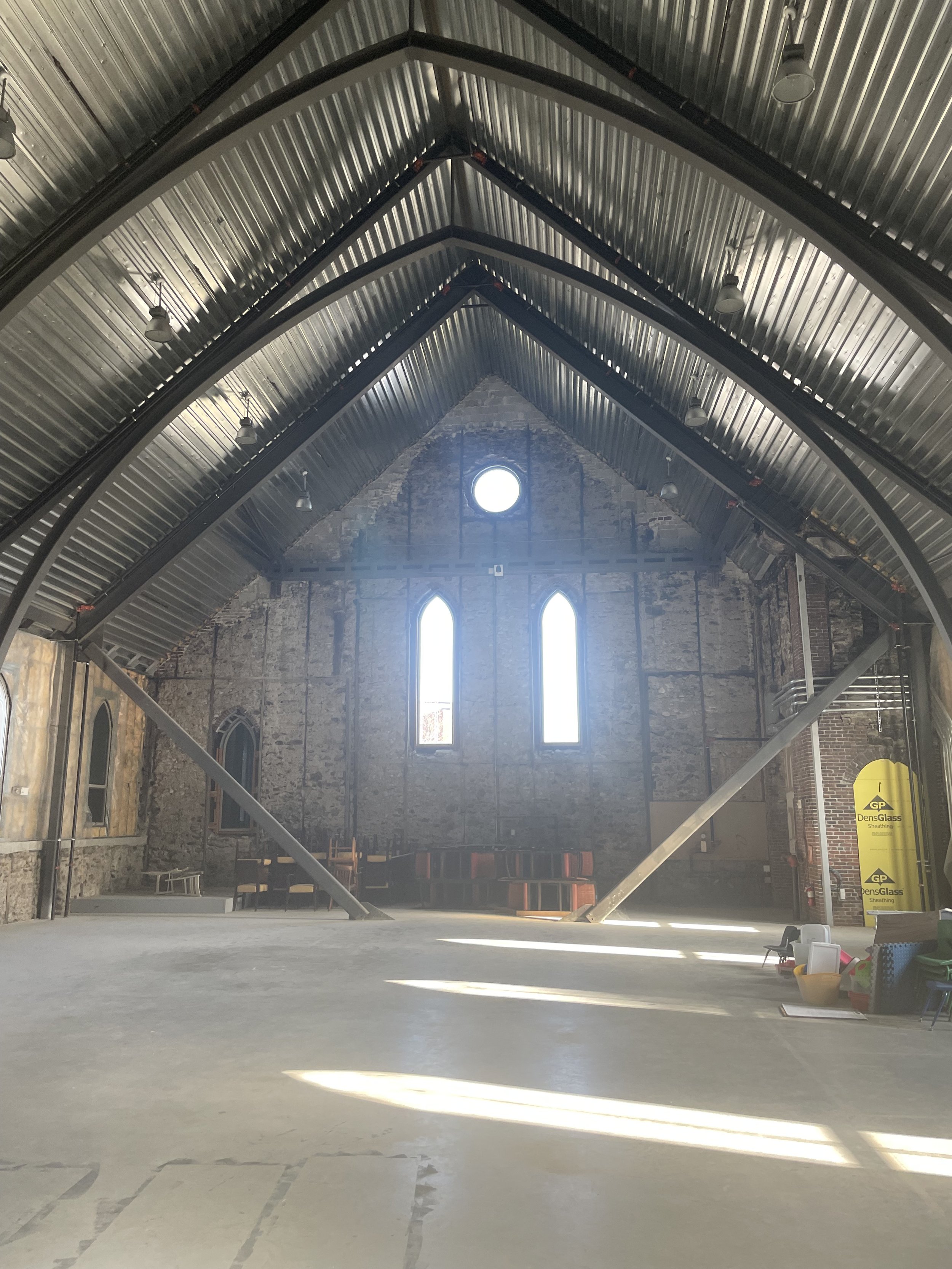
FOUR WAYS CHURCHES USE THEIR SPACE FOR ECONOMIC EMPOWERMENT
Four Ways Churches Use Their Space for Economic Empowerment
by Saranya Sathananthan, Researcher in Residence
1. Commercial Kitchens
Many churches have large kitchens with various appliances and accessories that remain underutilized for most of the week. Occasionally, congregation members use these spaces to prepare food for church events or partner with nonprofits to cook meals for distribution or soup kitchens. However, many of these kitchens are not licensed, limiting their use. Imagine the significant economic impact of investing in transforming these kitchens into licensed commercial kitchens.
Food served at public events must be prepared by businesses operating out of licensed kitchens, with the appropriate permits for food handling. Boston has a limited number of shared commercial kitchens where caterers can legally cook for events. Churches offering these spaces to community members would provide crucial support to small businesses needing such facilities throughout the city.
However, running a licensed shared kitchen involves navigating considerable regulatory red tape. Therefore, churches would need to partner with individuals or businesses experienced in this area and develop a partnership where the business operates out of the church space. This collaboration could unlock new opportunities for both the church and the community, contributing to local economic growth.
A commissary kitchen operating out of First Baptist Church Jamaica Plain.
2. Early Childhood Education (Daycares and Schools)
The cost of childcare in major cities like Boston is staggering. The average weekly daycare cost in 2023 was $321, up 13% from $284 in 2022, which can amount to over $1,500 per month1—if you're fortunate enough to find it that low here in the city. Families often have to tap into savings and rely on both household incomes to cover these expenses. Parents face difficult decisions about whether it's even worth it for both to return to work, as much of their income goes directly to childcare costs.2 The issue is compounded by the limited supply of childcare options, leading to lengthy waitlists, sometimes extending for a year before the child is even born.
In the United Kingdom, many churches have stepped in to provide childcare services, offering much-needed support to families.3 For churches in Boston, creating affordable daycare or a private preschool could be a meaningful social enterprise, especially if there are individuals within the congregation who have the knowledge and passion for running such an initiative. Alternatively, churches might consider partnering with individuals or organizations interested in starting their own school or daycare, provided they share similar values—even if the focus is not on Christian education.
There are, of course, regulatory restrictions to consider, such as compliance with building codes. However, by working closely with a school or daycare partner, churches can either collaborate to make the necessary changes or include those requirements as part of the agreement, ensuring that the partner is responsible for compliance. While some churches may have dedicated spaces for a school or daycare, utilizing shared or multi-use spaces is becoming more common—especially in urban settings. What works best will depend on the needs of both the church and the childcare provider, and it will likely require some compromise to find a solution that benefits everyone involved.
Entryway to a sanctuary that is used as a preschool during the day at First Baptist Church of Jamaica Plain.
3. Affordable Housing
The 2023 Greater Boston Housing Report Card, produced by the Boston Foundation, highlights a growing crisis. An increasing number of residents across all income and education levels are leaving the region due to skyrocketing housing costs for rentals and homeownership. The existing housing supply does not meet the demand. And Massachusetts lags behind other states in producing more housing—particularly housing that is affordable to middle- and low-income individuals and families.
The Metro Mayors Coalition, which comprises 15 municipalities in Massachusetts, has set a goal to produce 185,000 new housing units between 2015 and 2030 to address this imbalance. However, Boston remains one of the most expensive rental markets in the nation, and the disparities across racial lines are significant according to the housing report card: “Black and Latino families are still far less likely than White or Asian families to own homes in Greater Boston.”4 The report also examined affordability, defining a household as "cost burdened" if it spends more than 30% of its income on housing. The findings were stark: “The majority of renter households in Greater Boston earning less than $75,000 are cost burdened. Overall, about half of renters and a quarter of homeowners in the region are cost burdened.”5
Imagine if churches could help address this issue by creating affordable housing for renters and homeowners in Boston, particularly for those most vulnerable to being financially pushed out of the city. The income saved by residents through church-created affordable housing could significantly contribute to the city’s economic vitality in numerous other ways. For churches open to exploring this non-traditional option, partnering with developers to create affordable housing on their properties is a viable path. Some churches in Greater Boston, such as East Coast International Church in Lynn, Massachusetts, and St. Katharine Drexel Parish in Roxbury, Massachusetts, are already doing this. While it's not easy—requiring access to various city, state, and federal incentives and working with mission-oriented developers rather than purely profit-driven ones—it can make a substantial impact.
For churches where working with developers and funding agencies feels too complex or misaligned with their values, there are other ways to provide affordable housing. Several churches in Boston still own other properties, such as parish houses, which were traditionally used to offer free or low-cost housing for clergy and their families. Many are considering using these parish houses or other properties to provide housing for vulnerable groups. For instance, Restoration City Church in Roxbury, Massachusetts, operates Jasmine’s House, which offers a haven for women rebuilding their lives after being trafficked. Other churches use parish houses as temporary housing for migrants and refugees. There are numerous possibilities.
Moreover, many parachurch ministries actively seek housing for the different groups they serve. This situation presents an excellent partnership opportunity for churches to make their housing assets available for ministry purposes, further extending their impact on the community.
4. Spaces for the Arts
Many major cities are committed to funding the arts. In Boston, significant investments have been made to ensure an equitable recovery for the arts and culture sector following the coronavirus pandemic, supporting everything from theater and dance to public art and libraries. In fiscal year 2023, the City of Boston allocated $25 million in American Rescue Plan Act (ARPA) funding to bolster arts and cultural activities in downtown Boston and neighborhoods across the city as part of their community revitalization efforts. While ARPA funding has concluded, opportunities for the arts continue to thrive.6
Imagine artists using church spaces as studios, galleries, rehearsal spaces, and performance venues. Church communities sometimes undervalue artists, yet they contribute immensely to the cultural vitality of our neighborhoods.
See "Christian Creatives and the Church"
There are numerous opportunities for churches to collaborate with local artists and even co-apply for funding to support public art initiatives. By utilizing non-traditional spaces, such as church properties, for artistic endeavors, churches can create vibrant cultural hubs that benefit and positively impact the community.
Performance of Benjamin Brittain's "The Prodigal Son" by Enigma Chamber Opera in February 2024 in the Cathedral Church of St. Paul’s sanctuary in Boston. According to the church, part of its strategic plan is to “strengthen the civic fabric by hosting events at the intersection of arts, education, and faith that bring together a wide range of people and address relevant issues of our time.” Photo credit: Rev. Amy McCreath
The future location of The Center for Faith, Art, and Justice at First Baptist Church of Jamaica Plain in Boston. This space was destroyed by a fire in 2005, and efforts are underway to fundraise to complete its restoration.
The renovated sanctuary will feature a gallery space. Rendered images courtesy of First Baptist Church of Jamaica Plain.
By leveraging their properties in these strategic ways, churches can play a vital role in the economic vitality of their neighborhoods. When cities invest in church spaces, it creates a win-win situation, enabling churches to continue their presence and contributions to the community.
These are only a few opportunities I see having potential for impact. But it’s important to note that the first step before launching into any of these paths is for church leaders to begin these conversations with community stakeholders and city leaders to discern where there is momentum for collaboration and building something new together. It may take years before anything visible is accomplished, yet those relationships built from the onset are foundational for long-term success.
- Care.com Editorial Staff, “This is What Child Care Costs in 2024,” 2024 Cost of Care Report, CARE, Jan. 17, 2024, https://www.care.com/c/how-much-does-child-care-cost/.↩︎
- Kristi Palma, “Child Care Expenses are Crippling, Say Boston.com Readers,” Boston.com, March 2, 2023, https://www.boston.com/community/readers-say/child-care-expenses-are-crippling-say-boston-com-readers/.↩︎
- Hope Together, “Talking Toddlers,” (Research Report), 2020, accessed October 3, 2024, https://www.hopetogether.org.uk/Publisher/File.aspx?ID=257900.↩︎
- Sonia Gupta and Sandy Kendall, eds., “The Greater Boston Housing Report Card 2023 with a Special Analysis of Community Land Trusts,” The Boston Foundation, 2023, 32, accessed October 3, 2024, https://www.tbf.org/news-and-insights/reports/2023/november/2023-greater-boston-housing-report-card.↩︎
- Gupta and Kendall, “The Greater Boston Housing Report Card 2023,” 40, https://www.tbf.org/news-and-insights/reports/2023/november/2023-greater-boston-housing-report-card.↩︎
- “Strengthening Arts and Culture,” City of Boston: Mayor’s Office of Arts and Culture. July 1, 2022, https://www.boston.gov/departments/budget/strengthening-arts-and-culture.↩︎








